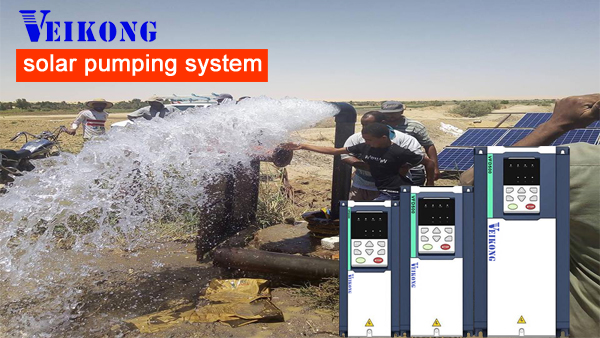Solar power pumping can replace a significant portion of the mains electricity and diesel currently used in rural water pumping. It lies in two areas including stock and domestic pumping and bulk water pumping integration. Whether your pumping task is large or small, it is essential that you approach solar from an informed position.
A solar-powered water pumping system can find application in tower water supply, livestock watering, and irrigation. It is ideal to find a reliable solar pump inverter manufacturer in China, or wherever you live, to get high-quality products at reasonable prices. Below, I’m going to share some important things about solar power inverter that you should know.
How A Solar Inverter Work?
A typical solar-powered pumping system consists of solar power fixed to an electric motor that runs a bore or surface electric pump. A solar pumping solution generally supplies a DC pump that is connected directly to the solar panels and doesn’t require a DC/AC inverter. DC brushless motor also provides very high-efficiency levels. And in the case where an AC pump is already in place, a solar water pump inverter is required between the PV panel and motor for converting the DC generated by the solar panel to the AC required by the electric pump motor.
Solar Pumping Configurations
- Three-Phase Solar Pump
It consists of PV panels connected to a three-phase variable speed drive an alternate current three-phase pump. Panels are connected directly to the DC bus inside the VSD. They are best suited to large pumping applications and will permit the pump to run at low sunlight levels, although at a slower speed.
- Solar-Diesel Integration
It includes a very high upfront cost and is not suitable for small to medium-sized farms. In a solar-power integration system, PV is synchronized with diesel engines, with a governor that regulates the diesel load so as for maximizing the power drawn from solar. It would require running the pumps for the majority of the day.
- Pre-Packed Solar Pumps
Package solar pump solutions that include the installation of both PV systems and pump specially designed to work with solar PV systems. They are becoming more common in drip-feed and spray systems in which daytime pumping are needed. Otherwise, a storage tank can be utilized for night-time irrigation. They are very efficient and are available in sizes.
Key Steps In Sizing a Solar Pumping System
- You should determine the total dynamic head of the system using flow-rate requirements, pipe length and diameter, and also height between the suction and discharge points.
- It is also essential to determine the daily flow requirement and the expected number of weeks per year of pumping.
- Based on the water source, you can choose a surface or submersible pump.
- Always choose a pump of adequate size to meet the head and flow requirement.
- You should know the power requirement and running time for the selected pump to determine the electrical load profile of the pumping operation to then size the solar PV system.
- You can consider using battery storage or combinations.
The Future-Scope of Solar Pumping System
With the advancement in technology, the solar pumping system can be made more user-friendly. And anyone can control the motor pump from a remote location using their cell phone. And they can also get water level indication of the reservoir and overhead storage tank in their smartphone.
These are some important things that you should know about using a solar power inverter. You can find a reliable solar pump controller manufacturer in China, or elsewhere, for buying high-quality products.

